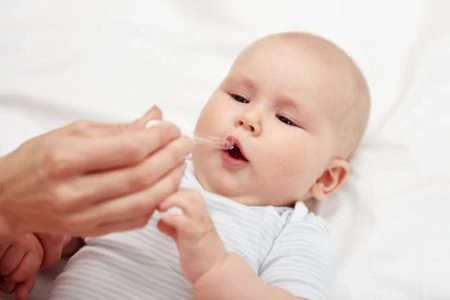Does your baby start to fuss right after feeding? Do they keep crying despite your best efforts to settle them? If so, you are likely dealing with a gassy baby.
Gas is a completely natural byproduct of digestion. However, when it is obvious your child is in pain, it is tough to remind yourself that this is normal.
Monitoring your child’s reactions to specific triggers is the best way to narrow down the cause. While every child is unique, understanding the basics of infant digestion helps immensely.
I have put together a guide to help you understand how gas affects your baby, along with actionable tips to help everyone get some relief.
Key Takeaways
- Gas is a natural byproduct of digestion but can cause significant distress in infants.
- Common causes include swallowing excess air, immature digestive systems, and food sensitivities.
- Prevention strategies focus on latch correction, slower feeding speeds, and diet adjustments.
- Effective relief methods include the “I Love You” massage, bicycle legs, and tummy time.
What Causes Baby Gas?
As children get older, they can tell you where it hurts. For newborns and infants, however, figuring out the root of the crying is a guessing game.
Since babies have tiny tummies, even a small amount of trapped air can cause visible discomfort. If you suspect gas is the culprit, look for these physical indicators:
- Bloating: If gas remains in the system too long, the belly may look distended or rounder than usual.
- Hard Tummy: Gently touch their stomach; a gassy belly often feels tight, hard, or slightly swollen.
- Squirming: If your baby is arching their back, pulling legs up, or grunting, they are likely trying to relieve pressure.
Sometimes there are no visual cues. In those cases, understanding the mechanics of how gas forms helps you respond faster.
1. Swallowing Air
Breathing and eating are complex skills to coordinate. While adults do this subconsciously, babies are still learning the mechanics of suck, swallow, and breathe. This learning curve often leads to aerophagia, the fancy term for swallowing air (1).
Once air enters the body, it must exit. If you can find a burping method that works, your child can release the air before it travels to the intestines where it causes pain.
Several scenarios increase the amount of air a baby swallows:
Crying Episodes
Crying creates a vicious cycle. The pain causes crying, and the crying causes them to gulp down more air, which creates more gas. If your baby has been crying for a while, gas is almost certainly present.
Feeding Speed
Is your baby gulping at the breast or finishing a bottle in record time? Rapid feeding often means they are taking in air along with the milk.
Pacifier Use
Pacifiers are great for soothing, but vigorous sucking on them can draw in air. Always check that the pacifier is the right size for your baby’s mouth and isn’t damaged.
2. Digestion and Gut Bacteria
Gas is also produced internally during digestion. When food moves to the intestines, bacteria break down sugars and proteins.
This bacterial breakdown creates gas as a byproduct. Because a baby’s digestive system is immature, they may not process food as efficiently as older children, leading to more flatulence.
Introduction to solid foods is another major trigger. This milestone is a shock to the system, and the adaptation period is often a gassy one. Food takes hours to digest, so if your baby is cranky, consider what they ate earlier in the day or even the day before.
Certain foods are known to produce more gas and should be introduced carefully (2):
- High-Fiber Vegetables: Broccoli, cauliflower, Brussels sprouts, and cabbage are common culprits.
- Legumes: Beans and lentils are healthy but notoriously gassy.
- Dairy: Cheese, yogurt, and cow’s milk (if over 12 months) can trigger issues if the child is sensitive.
- Sugary Drinks: Fruit juices containing sorbitol or high-fructose corn syrup can cause tummy rumbling and diarrhea.
How to Prevent Baby Gas
Gas is part of being human, so you cannot eliminate it entirely. However, you can significantly reduce the frequency and intensity by adjusting how you feed your little one.
1. Breastfeeding Adjustments
Breastfeeding mechanics play a huge role in how much air a baby takes in. Here are a few adjustments that can make a difference.
Laid-Back Nursing
If you suspect a fast let-down is causing your baby to gulp, try “biological nurturing” or the laid-back position.
Lean back on your couch or bed in a semi-reclined position. Place your baby tummy-to-tummy on top of you. Gravity helps slow the milk flow, and your baby can control the latch more effectively, reducing air intake.
This position is also incredibly relaxing and promotes skin-to-skin bonding, which can help calm a fussy infant.
If you don’t feel comfortable reclined, at least be sure baby’s head is much higher than his bottom when eating. If his head is at breast level with his bottom in your lap, he can handle a fast flow more easily, taking in less air.
Editor's Note:
Michelle Roth, BA, IBCLCFixing the Latch
A shallow latch is a primary cause of gas in breastfed babies. If the baby does not form a tight seal, they suck in air from the corners of their mouth.
If you experience nipple soreness or hear clicking sounds during nursing, the latch likely needs correction (3). Encourage your baby to open their mouth wide (like a yawn) before bringing them to the breast. This ensures they take in enough breast tissue to form a vacuum seal.
Mom’s Diet
There is a lot of folklore about what breastfeeding moms can eat. The truth is, gas from the vegetables you eat (like broccoli) stays in your gut and does not transfer to your milk.
However, proteins from food do enter your milk. If you suspect your diet is affecting your baby, here are the most common sensitivities:
- Cow’s Milk Protein: Dairy is the most common sensitivity (4). If your baby has a true intolerance (CMPA), you will likely see other symptoms like green mucousy poop, eczema rashes, or vomiting.
- Soy: Many babies who are sensitive to dairy are also sensitive to soy proteins.
- Caffeine: Excessive caffeine intake by the mother can sometimes cause jitteriness or digestive upset in sensitive infants.
2. Bottle Feeding Tactics
Bottle-fed babies are just as vulnerable to gas, but often for different reasons. Equipment choices and technique matter here.
If you think your baby’s bottle is the problem, run through this checklist:
- Keep Upright: Feed your baby in a semi-upright position rather than laying them flat. This prevents milk from pooling at the back of the throat and allows gravity to help digestion.
- Tilt the Bottle: Ensure the nipple is completely filled with milk, not air. If you see air bubbles in the nipple tip, adjust your angle immediately.
- Check Nipple Flow: If the baby is choking or milk is dripping out of their mouth, the flow is too fast. If they are getting frustrated and sucking hard, it is too slow. Both situations cause air swallowing. Switch to a different nipple size as needed.
- Formula Type: Some babies struggle to digest standard cow’s milk formulas. Switching to a “gentle” or hydrolyzed protein formula can sometimes reduce gas.
3. Starting Solids
Weaning is exciting, but baby guts are sensitive. Every spoonful of new food is a challenge for their digestive enzymes.
When starting solids, introduce one new ingredient at a time and wait 2 to 3 days before introducing another. This helps you identify exactly which food causes gas or an allergic reaction.
If a specific food like pears or beans seems to cause pain, pause serving it. Try again in a few weeks when their digestive system is more mature. Do not cut these healthy foods out forever; just give their tummy time to catch up.
How to Relieve a Gassy Baby
When prevention fails and your infant is squirming in pain, you need immediate relief tactics. Here are the most effective methods to help your baby pass gas.
Could Baby Gas Be Something More Serious?
In the vast majority of cases, gas is annoying but harmless. However, if the gas is accompanied by other symptoms, it could signal a medical issue requiring attention.
1. Constipation
Newborns are poop machines, often going after every feed. As they age, frequency decreases, but the consistency should remain soft.
If your baby is gassy and straining without success, they might be constipated. True constipation is defined by hard, dry, pebble-like stools, not just the absence of poop for a day or two (7).
If you see blood in the stool or your baby is miserable while trying to go, call your doctor. They may suggest a small amount of water or prune juice for older infants.
2. Reflux (GERD)
All babies spit up, but Gastroesophageal Reflux Disease (GERD) is different. It involves the painful backing up of acid from the stomach.
If your baby arches their back during feeding, spits up large amounts frequently, and seems in pain while lying flat, it could be GERD. Gas is often a side effect because these babies gulp air while crying or feeding nervously. Most outgrow it by their first birthday.
3. Colic
Colic is a diagnosis of exclusion. It is defined by the “Rule of Three”: crying for more than 3 hours a day, 3 days a week, for 3 weeks in an otherwise healthy baby.
Doctors still don’t know the exact cause of colic, but gas is a major suspect. The crying causes air swallowing, which causes gas pain, which causes more crying (8). Soothing techniques for colic often overlap with gas relief methods.
4. Cow's Milk Protein Allergy (CMPA)
True lactose intolerance is extremely rare in babies. What is often mistaken for intolerance is actually an allergy to the protein in cow’s milk (CMPA).
This condition occurs when the immune system reacts to proteins found in formula or dairy products in the mother’s diet. Symptoms go beyond gas and usually include mucous or blood in the stool, vomiting, skin rashes, and poor weight gain.
If you suspect this, your pediatrician may recommend a hypoallergenic formula or a dairy-elimination diet for breastfeeding moms.
5. Celiac Disease
Celiac disease is an autoimmune reaction to gluten (found in wheat, barley, and rye). It typically does not present until a baby starts eating solids containing gluten (9).
Symptoms include severe bloating, chronic diarrhea, irritability, and slowed growth. If Celiac runs in your family, monitor your child closely when you introduce breads and cereals.









